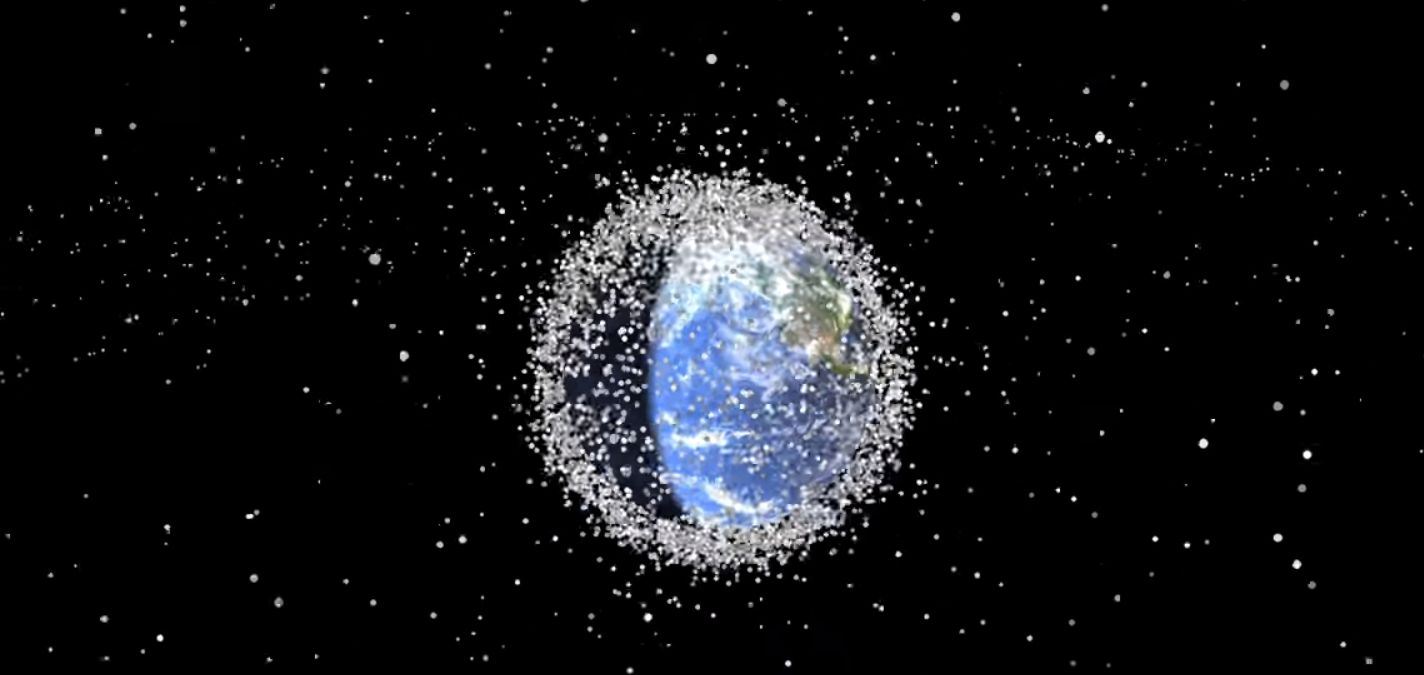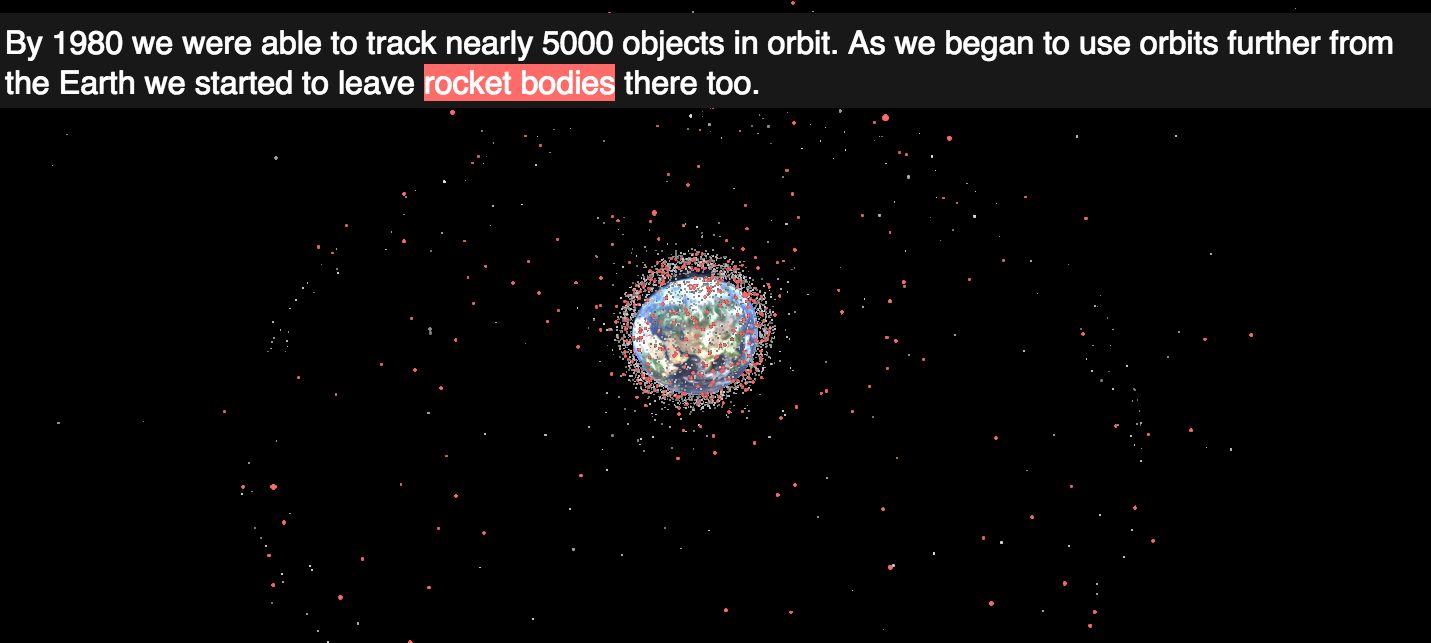We’ve known for a while now that Earth is the Pig-Pen of our solar system. There are more than 20,000 pieces of space junk currently orbiting the planet, and that number is only going to grow.
But like any respectable dirty kid, the filth doesn’t really bother us (well, it bothers some of us). In fact, we revel in it. And now, thanks to Stuart Grey of University College London, we can watch it all accumulate in this interactive visualization that the aerospace engineer made for the Royal Institute’s “A Place Called Space” advent calendar.
The whole visualization is basically a lesson on space exploration told through the junk that it left behind. It begins on Oct. 4, 1957, when Russia launched the first piece of space junk, known as Sputnik 1. The following year, the U.S. tossed out its own bit of space junk — a little satellite called Explorer 1. By the time Yuri Gagarin completed the first manned spaceflight in 1961, there were more than 200 pieces of space junk in orbit. Fast forward to 2000, and that number was at about 9,000. In 2007, a Chinese missile test added about 2,000 to the mix, and now, we’re hovering at around 20,000.
The individual pieces of trash range from the size of an apple to the size of a bus and include rocket bodies, launch debris, and whatever random bits of human engineering break off during satellite collisions. Below is a still from Grey’s simulation. The red dots represent rocket bodies, so if you weren’t already stoked about the prospect of reusable rockets, maybe this will fuel your jets:
On the plus side, nobody wants to invade a pigsty, so it’s quite possible that this cloud of debris is the only thing keeping us safe from our alien overlords. It’s just like in middle school, when your distaste for deodorant and showers was really just a way to protect yourself from having to make friends.





